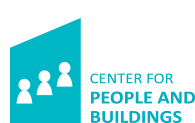Does FM Contribute to Happiness in the Nordic Countries?
15 september 2016
This past August 29th and 30th, the Center for Facilities Management at Per Anker Jensen organized the second Nordic Conference at the DTU campus in Lyngby, Denmark. CfPB was in attendance. A brief report of some of the highlights follows.
Trends in Campuses and Learning Environments
A universal challenge for FM is working with ‘”old” ’ organizations (with a long history) where employees’ desire for change is often low. Relevant trends for the redevelopment of the campus at Technical University of Denmark and other universities include:
- In an open world without borders, universities must compete with each other and must therefore be appealing to both staff and students.
- Students are becoming more and more flexible and mobile, increasing the diversity of the student population.
- Integration of education, research and innovation creates a knowledge triangle.
- New ways of learning (experimental learning, multi- or interdisciplinary research) require different accommodations and services.
- Less traditional classrooms seem necessary, with more variation in available spaces.
- More integration of learning and living is needed, with e.g. sports facilities and good coffee nearby and a more urban feel.
- Effective, efficient use of space needs to be more strongly encouraged.
- Integrating IT in education (with students used to being constantly online) requires new modes of learning.
- Universities must cooperate with the “outside world,” vocational institutions and society as a whole.
- Facilities should be of a high standard in order to attract the best students and researchers. Physical space is important in bringing people together. An exclusively digital learning environment is not enough.
Ronald Beckers (Vocational Institution Arnhem Nijmegen) indicated in his presentation that the teacher’s role is evolving from leading to more of a coaching or supporting role. As the process changes, so must the setting, but is the current approach correct? Dutch vocational institutions have chosen to implement more open, informal spaces and less traditional classrooms. This doesn’t always match students’ needs. Students tend to take their individual work home, for more autonomy. For group work they prefer separate, enclosable (project) spaces at school. Wifi is very important, as of course are light and comfort. They’d rather avoid working nearby or in a café.
Ollie Niemi (Adjunct Professor at University Properties of Finland Ltd.) also mentioned the challenge of moving the focus from teaching to learning and how changing the environment is a social process. Users receive better value when we look together at “what could be” instead of “what is.” Co-creation could be a solution for universities, instead of the current interminable discussions on who’s responsible for what and who should pay, says Niemi.
Co-Creation
Creating added value with FM, the focus of this two-day conference, was approached from various perspectives during the event. The co-creation mentioned by Niemi cropped up multiple times as a possible solution. This involves concentrating on the (end) user and their experiences, with FM focusing more on Business-to-Customer (instead of B2B) and packaged services (instead of separate services) matched to the customer’s needs.
The hospitality industry is also becoming more aware of the value of co-creation and working together to improve the customer or user experience.
The question is, which provides the added value; the facilities and services or the human factor? Can we treat FM as an experience economy? And is a bottom-up approach possible within FM? Or would people then experience too many hurdles during the decision-making process? Some key points to emerge included:
- Tensions between costs/efficiency and what users and customers want or see.
- Desirability of training FM “receivers” to increase their knowledge, understanding and awareness of what to expect.
- Knowing the users; who they are, and what they do, say, experience and mean, and the challenges involved in getting this knowledge to FM organizations.
New Book and Some Nice Quotes from the Conference
On the second day, Per Anker Jensen and Theo van der Voordt presented their new book, “Facilities Management and Corporate Real Estate Management as Value Drivers: How to Manage and Measure Adding Value?”
- “A building can never have too much coffee or too many electrical outlets."
- “When the process changes, so should the setting. But are we doing it right?”
- “The context determines what makes the best office.”
- “Companies can’t create the value, only present it. When customers accept it, then there is value” (Claire Esther Staddon Forder)
- “Usability = the quality of a building = the relationship between people and the building” (Aneta Fronczek-Munter)
